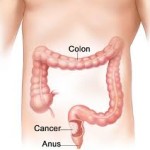 Fibroids are benign tumors that grow inside the uterus. They can grow inside the uterine wall, inside the uterine cavity or outside the uterus and attached to the outside wall. They happen most often in women who are in their 30s and 40s and these tumors are commonly not cancerous.
Fibroids are benign tumors that grow inside the uterus. They can grow inside the uterine wall, inside the uterine cavity or outside the uterus and attached to the outside wall. They happen most often in women who are in their 30s and 40s and these tumors are commonly not cancerous.
Doctors will use physical examination, medical history, ultrasound or hysterosalpingogram to confirm diagnosis, or the presence of uterine fibroids. Often times women know they are having these problems because of the symptoms which the fibroids cause. Women who have large fibroids will experience a heavy feeling in their pelvis which often leads to constipation or urinary frequency, women will also have difficulty with increased bleeding and a resulting anemia.
A myomectomy is the surgical removal of the fibroid tumor itself and is the preferred treatment for women who want to retain their uterus and their fertility. A larger tumor will require the use of an abdominal incision while smaller fibroids have been removed using a laparoscopic techniques or hysteroscopy.
A myomectomy is an alternative to hysterectomy and can be effective for treatment of infertility caused by the fibroids. Women find that it relieves the symptoms that have not responded well to medication and will not have the same difficulty with infertility that a uterine fibroid embolization will have.
There are risks to removal of the fibroids using a myomectomy procedure that can lead to severe bleeding. Because this is a challenging surgical procedure not all physicians are adept at it. Many physicians will recommend that the patient bank their own blood before her surgery so it can be used for a self transfusion. The surgeon usually also requests a consent form for hysterectomy should the surgery go poorly.
A myomectomy surgical procedure can be done using a laparoscopic cut, bikini cut or vertical cut from naval to the pubic bone. The surgeon decides upon the type of incision based upon the positioning of the fibroids and the size of the tumor. A particular type of incision will not impact fertility.
Many physicians will use a period of preparation for patients if you are planning a myomectomy. Hormonal treatments with drugs such as Lupron for two to six months prior to the surgery, will shrink the tumors. In addition to potentially shrinking the fibroids, Lupron will also stop the menstrual periods or decrease them significantly. This will help a woman to rebuild her blood count if she is suffering from anemia prior to surgery. (1)
Recovery time for a myomectomy can range from three days to six weeks depending upon the way in which the surgery was performed and the surgical approach or incision line. If a hysteroscope was used, the recovery time can be as little as three to four days. However, if a full abdominal myomectomy was planned, recovery can be as long as five to six weeks.
Potential complications are similar to those of most other surgeries and include infection, blood loss, internal scarring and adverse reactions to the anesthesia. In addition to this, the wall of the uterus can also be weakened so special care must be made for future pregnancies, such as a Caesarean delivery.
(1) Drugs.com: Lupron
http://www.drugs.com/lupron.html
RESOURCES
MayoClinic.com: Myomectomy
http://www.mayoclinic.com/health/myomectomy/MY00501
African Journal of Reproductive Health: Caesarean Myomectomy
http://www.ncbi.nlm.nih.gov/pubmed/12685407
Journal of the Royal Society: The Master of Myomectomy
http://www.ncbi.nlm.nih.gov/pmc/articles/PMC539516/
Fertility and Sterility: Uterine artery embolization versus myomectomy: a multicenter comparative study
http://www.ncbi.nlm.nih.gov/pubmed/16412720


Leave a Reply